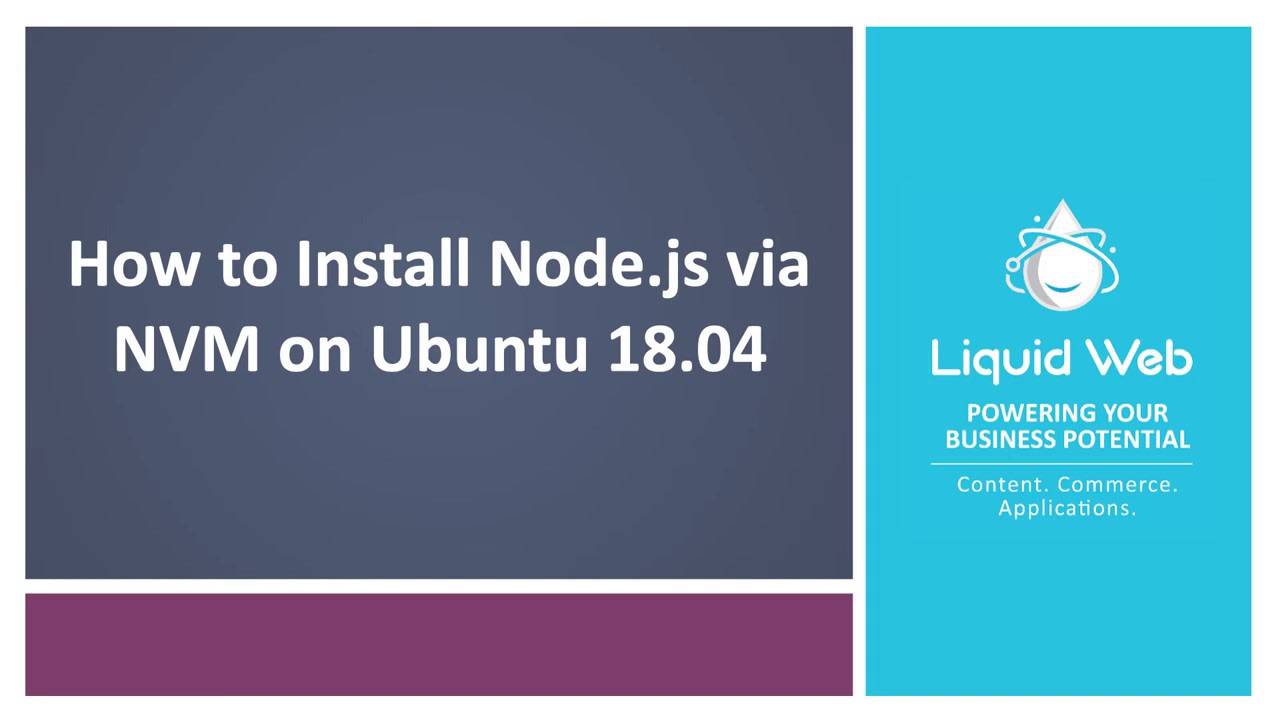

- #Nvm install node full version
- #Nvm install node update
- #Nvm install node manual
- #Nvm install node software
- #Nvm install node code
#Nvm install node manual
To install NVM used to be a bit of a manual effort, thankfully there is now a script that does the hard work for you. Method 1: Install NVM by Pacman Command In this method, we will use the default package manager (Pacman) command to install the NodeJS and NPM tools on our Arch Linux. It’s a powerful command line utility that allows you to manage multiple installations of Node.js comfortably. A popular Node version management tool you can use is nvm-windows. Follow this answer to receive notifications. Introduced above, NVM is a Node.js/NVM version manager that works with most Unix-like OSes, including OSX. A Node version manager is a tool you can use to install various versions of Node.js and npm and shift between them seamlessly.
#Nvm install node code
Latest LTS Version: 16.13.2 (includes npm 8.1.2) Download the Node.js source code or a pre-built installer for your platform, and start developing today.
#Nvm install node software
The system will ask if you want to run the software click Run. Node.js® is a JavaScript runtime built on Chromes V8 JavaScript engine. Or, browse to the location where you have saved the file and double-click it to launch. Open the downloads link in your browser and click the file.

Once the installer finishes downloading, launch it. Nvm alias default v14.17. Step 2: Install Node.js and NPM from Browser. If you want to change the default Node version later, you can run a command to adjust it.

Although it is available for macOS and Linux only, Node.js version manager for Windows exists (ironically it is written in Go). Install previous LTS release of Node.js LTS release (if you need to run older applications) nvm install v12.22.1. Now install the latest stable version of node. The command nvm root does show the 'directory where nvm should store different versions of node.js'. Node Version Manager is a simple bash CLI that allows you to install multiple Node.js versions and switch between them using simple commands. Now check if the nvm is installed by typing: Installing a package on a Node.js installed by NVM is the same as the regular installation of node.js, but the installation of the package is based on version number. The script clones the nvm repository to ~/.nvm and adds the source line to your profile (~/.bash_profile, ~/.zshrc, ~/.profile, or ~/.bashrc).

Node: this installs the latest version of node iojs: this installs the latest version of io.js stable: this alias is deprecated, and only truly applies to node v0.12 and earlier.
#Nvm install node update
To install or update nvm, use the install script using cURL: To uninstall the active version without any errors, first run the nvm deactivate command then nvm uninstall version-number. In place of a version pointer like 0.10 or 5.0 or 4.2.1, you can use the following special default aliases with nvm install, nvm use, nvm run, nvm exec, nvm which, etc. Click on Install & once it completes, click on the 'Finish' button.
#Nvm install node full version
The full version of Raspberry Pi Raspbian comes with node.js pre-installed but if you chose to install the light version than you will need to follow these steps to install node.js. NVM (Node Version Manager) for Windows has become my favorite tool for installing or upgrading NodeJS (even you can downgrade it), the steps are as follows: Download and install NVM for Windows from . Double-Click on the executable file to launch the installer. A number of our examples use node.js so you may need to install node before you can run our JavaScript examples. Install NVM An install.sh script is used to install and update nvm, you can find the latest version URL on the GitHub repository. Node Version Manager (NVM) is a tool that allows you to install versions for node.js. NVM is a version manager for Node.js, it provides a simple interface for installing and managing multiple versions easily.


 0 kommentar(er)
0 kommentar(er)
